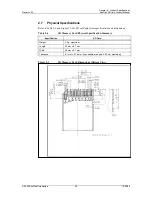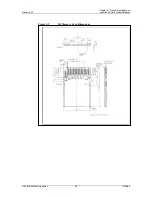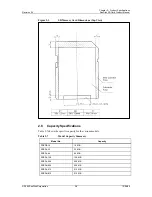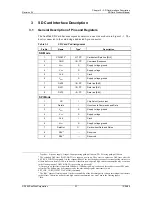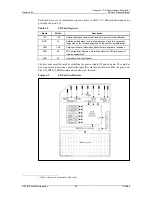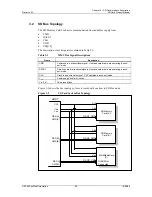
Chapter 1 – Introduction
Revision 2.2
SanDisk SD Card Product Manual
© 2004 SanDisk Corporation
1-4
12/08/04
1.7 Copyright
Protection
A detailed description of the Copyright Protection mechanism and related security SD Card
commands can be found in the
SD Security Specification
from the SD Association. All SD
Card security-related commands operate in the data transfer mode.
As defined in the SDMI specification, data content saved in the card is already encrypted
and passes transparently to and from the card. No operation is done on the data and there is
no restriction to read the data at any time. Associated with every data packet (e.g., a song)
that is saved in the unprotected memory, there is special data that is saved in a protected
memory area for any access (Read, Write or Erase command) to or from the data in the
protected area.
For an authentication procedure is done between the card and the connected device, either
the LCM (PC for example) or the PD (portable device, such as SD player). After the
authentication process passes, the card is ready to accept or give data from/to the connected
device. While the card is in the secured mode of operation (after the authentication
succeeded) the argument and the associated data that is sent to the card or read from the
card are encrypted. At the end of the Read, Write or Erase operation, the card gets out
automatically of its secured mode.
1.8 Endurance
SanDisk SD cards have an endurance specification for each sector of 100,000 writes typical
(reading a logical sector is unlimited). This far exceeds what is typically required in almost
all SD Card applications. Therefore, extremely heavy use of the card in cellular phones,
personal communicators, pagers and voice recorders will use only a fraction of the total
endurance over the device’s lifetime. For instance—it would take over 10 years to wear out
an area on an SD Card based on a file of any size (from 512 bytes to maximum capacity)
being rewritten 3 times per hour, 8 hours a day, 365 days per year.
With typical applications, the endurance limit is not of any practical concern to the vast
majority of users.
1.9 Wear
Leveling
Wear leveling is an intrinsic part of the erase pooling functionality of the SD Card, using
NAND memory. The Wear Level command is supported as a NOP operation to maintain
backward compatibility with existing software utilities.
1.10 Automatic Sleep Mode
A unique feature of the SanDisk SD Card is automatic entrance and exit from sleep mode.
Upon completion of an operation, the card enters the sleep mode to conserve power if no
further commands are received in less than five milliseconds (ms). The host does not have
to take any action for this to occur. However, in order to achieve the lowest sleep current,
the host needs to shut down its clock to the card. In most systems, the SD card is in sleep
mode except when the host is accessing it, thus conserving power.
When the host is ready to access the card in sleep mode, any command issued to it will
cause it to exit sleep, and respond.

















